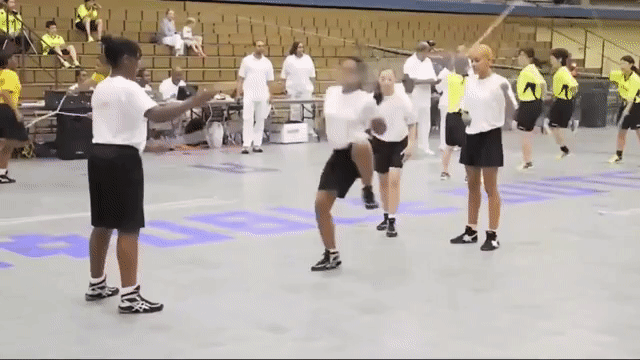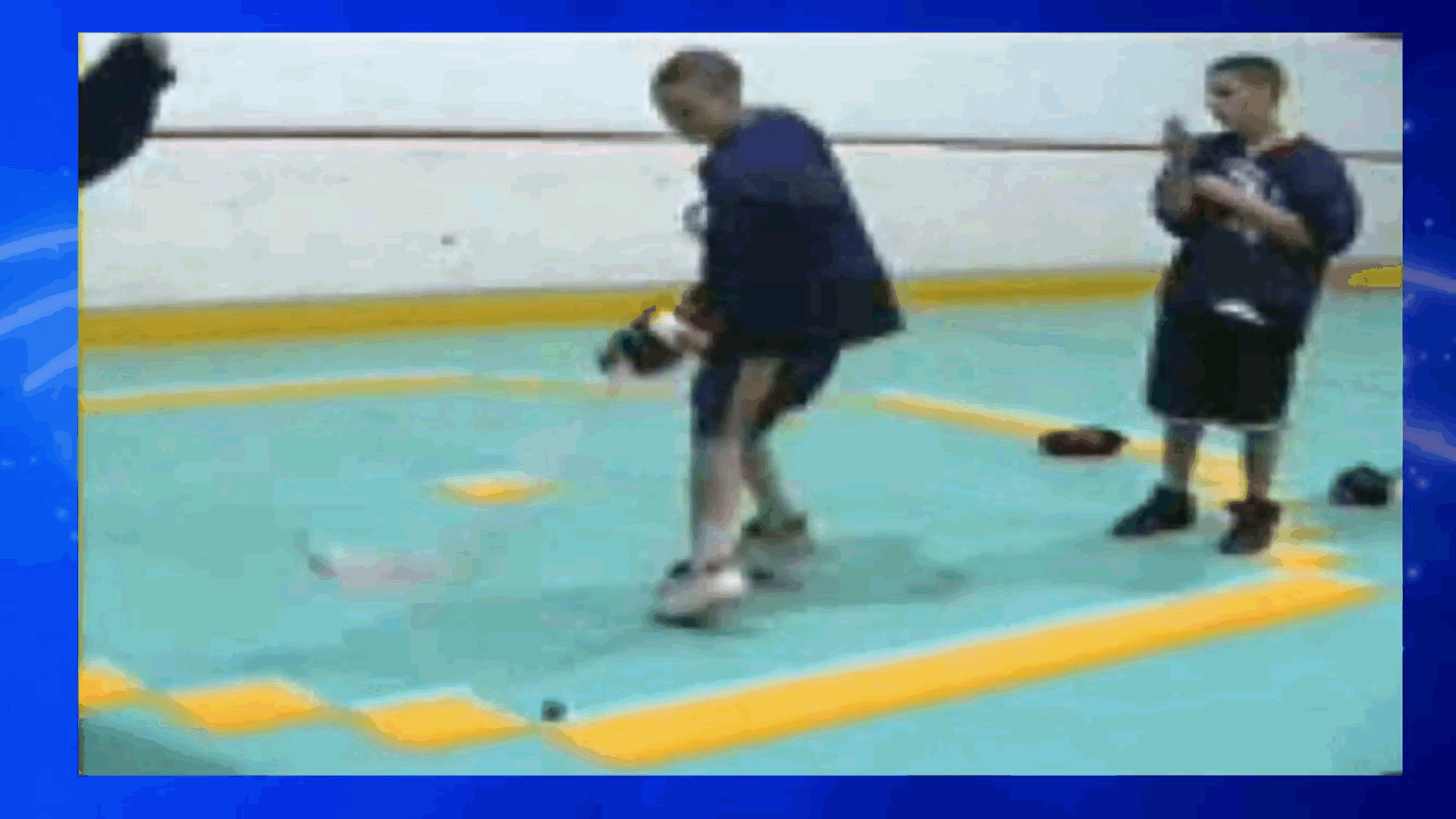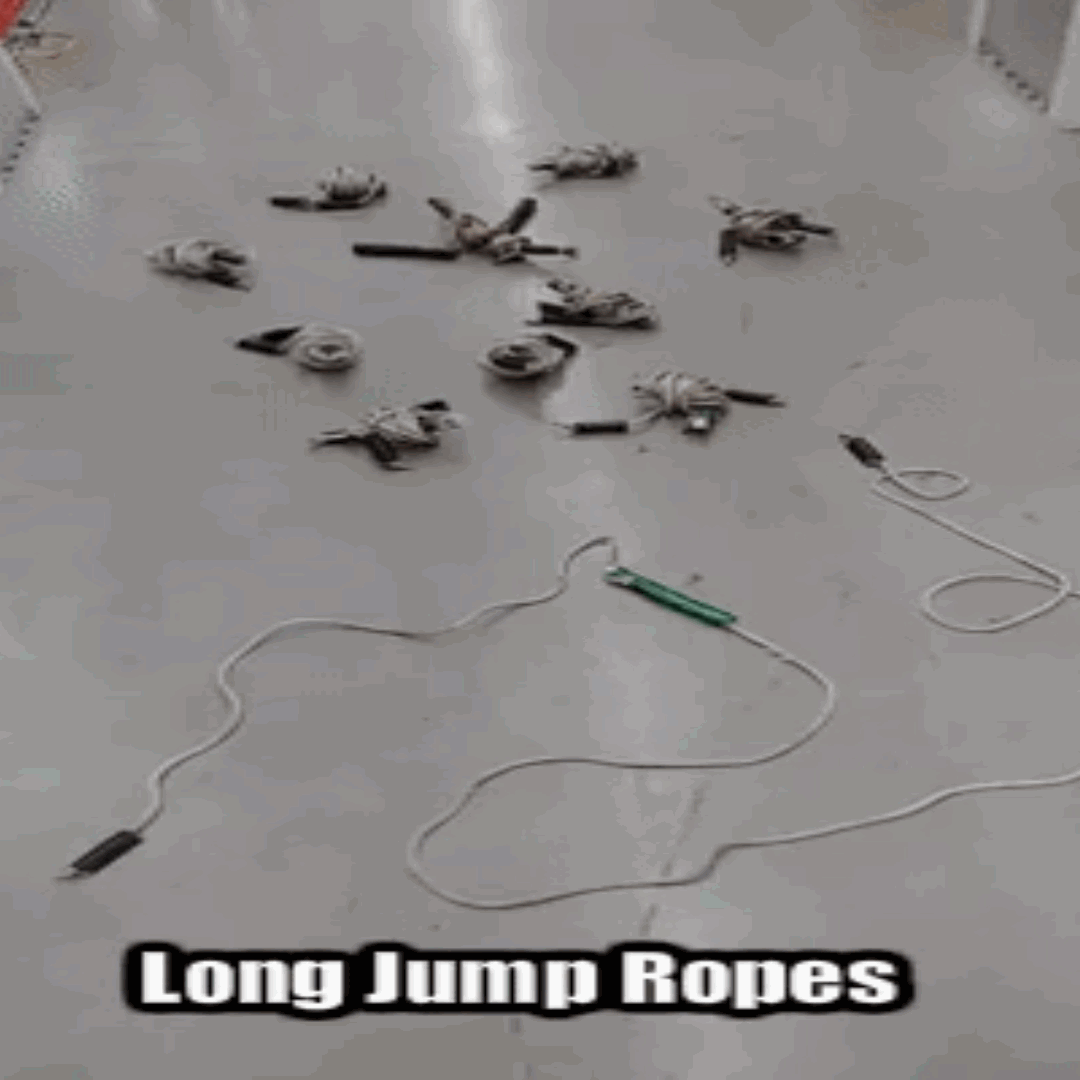Making Long Jump Ropes
While I studied long ago in the old USSR, I found it interesting that their coaches used a lot of activities for training that we’d have defined as schoolyard or playground games her in the states. Perhaps what I found most interesting was the fact that we North Americans had abandoned many of those physical challenges as rather old fashion, while the Soviets ran with them with great results. One such activity, for sure, was that of rope skipping.
By the time I returned from Moscow, I was obviously looking everywhere for new ideas, or activities that might challenge my own players and students beyond what they’d previously experienced. And with that came an event highlighted on YouTube.com, this one taking jumping rope to a completely different level…

Ya, you might imagine how the GIF shown above caught my attention, and soon had me scrambling for long ropes. Oh boy, would the coordination and footwork demonstrated in such videos prove helpful to my hockey players. At the same time, my sport is a whole lot more complex, and it involves a lot more than just footwork.

Members might like to know that I had to build progressions for my players to reach the skills shown in the above GIF…
First, of course, was just jumping the rope with two mates twirling — no stick or anything, but just jumping while facing in one direction.
Next — again with no stick, I asked my guys to spin one way and the other, all the way around, and so forth.Then, the stick was added. And, don’t misjudge the difficulty of this, because a kid had to really control the stick and not allow it to carelessly bounce around and tangle in the rope.
Of course, a ball was eventually added — for dribbling at first, and then later for passing with an extra teammate off to one side.
There wasn’t room within a rope to have two players jumping and passing a puck or ball, but there was enough for two guys to face each other and exchange a soccer ball in the air from chest to chest.
Anyway, the kids shown above were eventually asked to go a little nuts with a Swedish stickhandling ball or golf ball, with the guy in green even impressing this old coach with five or six dribbles in the air.
Okay, so now about those ropes themselves. Hmmmmm… As members might appreciate, I wanted most of my gear to serve dual purposes — or in this case being useful off the ice and on. So, my long ropes needed to be extra tough…

So, my long ropes were made from the toughest clothesline rope I could find.
I next wrestled with how to make handles and such that would stand up to the kind of abuse I knew they had to endure. Hmmmmm, again… What I arrived at were short sections of garden hose — to act as handles on the ends, and to provide weight in the middle. Yes, without weight, even a fairly heavy rope would flop around in the wind, while a 6-inch long section of hose would not only provide plenty of weight but, it would also last against ice or pavement or sharp skates.
Then — LOL, one last thing… The first time I stored about a dozen of those ropes loosely together, they looked like a plate of spaghetti a few days later. I mean, it was probably another few days before I could untangle them. So, this word to the wise: I’d tightly wrap the individual ropes as shown above, and then store them in something like a net bag.